Michael J. Behe's Blog, page 481
May 17, 2019
Dawkins’s successor at Oxford claims true AI creativity is coming
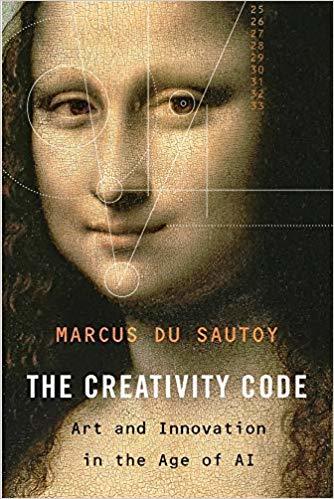
Richard Dawkins’s successor as Oxford’s Professor of the Public Understanding of Science, Marcus du Sautoy, wrote a book recently, The Creativity Code: Art and Innovation in the Age of AI, in which he claimed that AI can in principle demonstrate creativity. Software engineer Brendan Dixon takes issue with that. Three of du Sautoys’ four traits are not essential for creativity. And the fourth?
Du Sautoy’s fourth trait—“originality of a truly independent nature”—is a useful part of the definition of creativity. It is, however, the one trait that he admits is missing from AI’s “creative” attempts:
“But something fundamental is still missing: intentionality. What is driving the AI to blurt out a creative product? A human. Marcus du Santoy, “True AI creativity is coming and will reveal the minds of machines” at New Scientist”
He recognizes that present AI displays the creativity of its creators and not that of a machine-based intelligence. Brendan Dixon, “Why AI fails to actually create things” at Mind Matters News
One wonders why du Sautoy is making life hard for himself by insisting on claiming that AI can do things it cannot do, things that would violate the No Free Lunch principle. Dawkins confined himself to bashing religion, which is essentially an activity irrelevant to math, science, or computer programming. Less trouble to get into that way.
See also: When AlphaGo made a winning move, it exhibited no more creative insight than when it played pedestrian moves. Our surprise at AlphaGo’s move says more about our inability to predict what a program will do than about any creative effort of the program. We’ve known for decades that we cannot predict the results of any moderately complex computer program.
Copyright © 2019 Uncommon Descent . This Feed is for personal non-commercial use only. If you are not reading this material in your news aggregator, the site you are looking at is guilty of copyright infringement UNLESS EXPLICIT PERMISSION OTHERWISE HAS BEEN GIVEN. Please contact legal@uncommondescent.com so we can take legal action immediately.
Plugin by Taragana
Theoretical physicist reassures public, they’re not just making it up
She is a specialist in the “axion,” a hypothetical particle:
The existence of the axion was originally hypothesised with a far from frivolous purpose: to prevent particles that we know to be real from developing properties that we are pretty sure they don’t have. It originates in the Peccei-Quinn mechanism, named after its inventors Roberto Peccei and Helen Quinn. Here, it exists to stop the standard model of particle physics – our best stab yet at explaining how material reality works – from endowing a particle in the centre of all atoms, the neutron, with properties that are inconsistent with our laboratory observations…
Professor Sceptic was right. This is all hypothetical. Chanda Prescod-Weinstein, “Axions may or may not exist – but we’re not just making things up” at New Scientist
Okay. But perhaps some physicists will still choose to research particles for whose existence there is actually evidence. One hopes that’s okay.
See also: Researchers: Experiment Turns Up No Evidence Of Theoretical Particle, The Axion
Follow UD News at Twitter!
Copyright © 2019 Uncommon Descent . This Feed is for personal non-commercial use only. If you are not reading this material in your news aggregator, the site you are looking at is guilty of copyright infringement UNLESS EXPLICIT PERMISSION OTHERWISE HAS BEEN GIVEN. Please contact legal@uncommondescent.com so we can take legal action immediately.
Plugin by Taragana
Darwinian Jerry Coyne vents his spleen at Darwin-doubting Yale computer scientist
Remember Yale computer scientist David Gelernter who, like lots of smart people, gave up on Darwinism? Well, Darwinian evolutionary biologist Jerry Coyne got wind of it:
David Gelenrter is a well known computer scientist at Yale, famous for his innovations in parallel computing, and is also a writer and artist. He’s a religious Jew, a conservative, and—as of two years ago—a denier of anthropogenic global warming, a view at odds with his scientific background. In 1993 he was also badly injured in the hand and eye by a mail bomb sent by Ted Kaczynski, the Unabomber.
Coyne doesn’t think the Unabomber visit excuses Gelernter’s offence:
I’ve pondered at great length how a man can be apparently as intelligent as Gelernter, yet so susceptible to the blandishments of Intelligent Design—and so ignorant of the evidence that refutes it. All I can think of is religion. I may certainly be wrong here, but there’s some mental block that the man has against evidence that has convinced nearly every biologist alive.
Gelenrter has no formal training in biology, and I suppose I could say he doesn’t have the credibility to even attack evolution (he does seem ignorant of the fossil record). But I hate to pull rank and use arguments based on authority. All I can say is that his ignorance is both woeful and harmful, and he is serving as a useful idiot-manqué for the Intelligent Design Creationist movement. Jerry Coyne, “Computer scientist David Gelernter drinks the academic Kool-Aid, buys into intelligent design” at Why Evolution Is True
Gelernter is how likely to read Coyne’s diatribe and conclude he must be all wrong? But then Darwinians tend not to notice what others do. Presumably, it’s an adaptation.
 David Gelernter, by Doc Searls (Flickr: 2010_08_05_techonomy_154) [CC BY 2.0], via Wikimedia Commons
David Gelernter, by Doc Searls (Flickr: 2010_08_05_techonomy_154) [CC BY 2.0], via Wikimedia Commons Note: Jerry Coyne doesn’t like David Berlinski, top guy at Inference Review, either and can’t imagine why anyone reads his popular books. Lots of people are talking about Inference Review so be sure to keep the link to its articles handy.
See also: Yale computer scientist gives up on Darwin Whether ID offers correct explanations is separate from the fact that Darwinism does not. Anyway, just think. Gelernter actually read the books, instead of merely opposing them. He goes on to develop his thinking in detail.
Remember David Gelernter On Darwin’s Thugs? He’s Hit The Big Time, Sort Of. “Fiercely Anti-Intellectual” At that point, the “punks, bullies, and hangers-on” were attacking philosopher Thomas Nagel
Follow UD News at Twitter!
Copyright © 2019 Uncommon Descent . This Feed is for personal non-commercial use only. If you are not reading this material in your news aggregator, the site you are looking at is guilty of copyright infringement UNLESS EXPLICIT PERMISSION OTHERWISE HAS BEEN GIVEN. Please contact legal@uncommondescent.com so we can take legal action immediately.
Plugin by Taragana
So it’s come to this: Turmoil over what genes really do
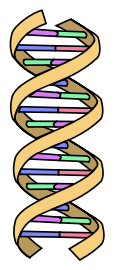
Two recent studies are now calling current methods into question:
A key breakthrough was the recent development of genome-wide association studies (GWAS, commonly pronounced “gee-wahs”). The genetics of simple traits can often be deduced from pedigrees, and people have been using that approach for millennia to selectively breed vegetables that taste better and cows that produce more milk. But many traits are not the result of a handful of genes that have clear, strong effects; rather, they are the product of tens of thousands of weaker genetic signals, often found in noncoding DNA. When it comes to those kinds of features — the ones that scientists are most interested in, from height, to blood pressure, to predispositions for schizophrenia — a problem arises. Although environmental factors can be controlled in agricultural settings so as not to confound the search for genetic influences, it’s not so straightforward to extricate the two in humans.
Jordana Cepelewicz, “New Turmoil Over Predicting the Effects of Genes” at Quanta
Fixes were tried and some hoped to “probe how natural selection might have led to observed differences in height (and other traits) among populations” (= bolster Darwinism). However:
But now, two results published last month have cast doubt on those findings, and have illustrated that problems with interpretations of GWAS results are far more pervasive than anyone realized. The work has implications for how scientists think about the interactions between genetic and environmental effects. It also “raise[s] the ghosts of the possibility that we overestimate … how important genetics is in contributing to differences between people,” said Rasmus Nielsen, a biologist at the University of California, Berkeley. Jordana Cepelewicz, “New Turmoil Over Predicting the Effects of Genes” at Quanta
Well, if genetics isn’t that important, what is heredity? Maybe epigenetics and horizontal gene transfer also shape the lives we live and live among. So then Darwinism is right but unimportant. It explains some things, not most things.
Hat tip: Philip Cunningham
Follow UD News at Twitter!
See also: Narwhal Thriving Despite Low Genetic Diversity
“Amazed” Researchers: Mitochondria Found That Produce Energy Without Any DNA
Researcher: “No Rhyme Or Reason” To Unexpected Sea Anemone Genome
and
Two Jellyfish Genomes Differ “As Drastically As Humans Do From Sea Urchins. ”
Copyright © 2019 Uncommon Descent . This Feed is for personal non-commercial use only. If you are not reading this material in your news aggregator, the site you are looking at is guilty of copyright infringement UNLESS EXPLICIT PERMISSION OTHERWISE HAS BEEN GIVEN. Please contact legal@uncommondescent.com so we can take legal action immediately.
Plugin by Taragana
May 16, 2019
Talk about stasis! Bedbugs are 100 million years old
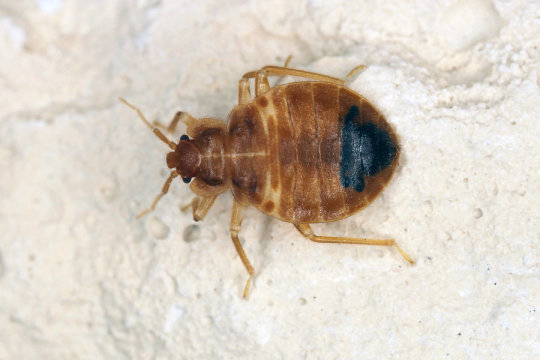 Bedbug/© Tomasz. Adobe Stock
Bedbug/© Tomasz. Adobe Stock And just what unfortunate creatures the bedbugs were living off back then isn’t clear. From ScienceDaily:
The team discovered that bedbugs are older than bats — a mammal that people had previously believed to be their first host 50-60 million years ago. Bedbugs in fact evolved around 50 million years earlier.
Bedbugs rank high among the list of most unwanted human bedfellows but until now, little was known about when they first originated.
Experts have now discovered that the evolutionary history of bed bugs is far more complex than previously thought and the critters were actually in existence during the time of dinosaurs. More research is needed to find out what their host was at that time, although current understanding suggests it’s unlikely they fed on the blood of dinosaurs. This is because bed bugs and all their relatives feed on animals that have a “home” — such as a bird’s nest, an owl’s burrow, a bat’s roost or a human’s bed — a mode of life that dinosaurs don’t seem to have adopted.
Well now, just a minute. Jurassic bedbugs might be our first clue that some dinosaurs did build nests.
Professor Mike Siva-Jothy from the University of Sheffield’s Department of Animal and Plant Sciences, who was part of the team, said: “To think that the pests that live in our beds today evolved more than 100 million years ago and were walking the earth side by side with dinosaurs, was a revelation. It shows that the evolutionary history of bed bugs is far more complex than we previously thought.”
Dr Steffen Roth from the University Museum Bergen in Norway, who led the study, added: “The first big surprise we found was that bedbugs are much older than bats, which everyone assumed to be their first host. It was also unexpected to see that evolutionary older bedbugs were already specialised on a single host type, even though we don’t know what the host was at the time when T. rex walked the earth.”Paper. open access) – Steffen Roth, Ondřej Balvín, Michael T. Siva-Jothy, Osvaldo Di Iorio, Petr Benda, Omar Calva, Eduardo I. Faundez, Faisal Ali Anwarali Khan, Mary McFadzen, Margie P. Lehnert, Richard Naylor, Nikolay Simov, Edward H. Morrow, Endre Willassen, Klaus Reinhardt. Bedbugs Evolved before Their Bat Hosts and Did Not Co-speciate with Ancient Humans. Current Biology, 2019; DOI: 10.1016/j.cub.2019.04.048 More.
Well, they will just have to keep looking for that early, really simple bedbug, below which there is nothing but sub-bedbugs.
The bedbugs are also sucking the blood from tidy theories:
The study also disputes previously accepted ideas about how the parasites’ feeding patterns evolved. Earlier hypotheses held that bedbugs grew pickier over time, shifting from generalists that fed on whatever came their way to specialists that stuck to specific hosts as food sources. This pattern has been observed in other species; those that focus their efforts on a specialized diet can become highly efficient at acquiring nutrients from select sources, and sometimes they out-compete their less finicky counterparts.
However, the researchers’ results don’t support an overall shift from generalist to specialist feeding patterns, Reinhardt says. In fact, in a number of cases, the parasites seem to have expanded their diets. Maddie Burakoff, “Bedbugs Scurried the Earth Alongside the Dinosaurs 100 Million Years Ago” at Smithsonian Magazine
See also: Amber—a moment in time 100 mya Life forms trapped in amber—hardened resin from conifers—can show remarkable examples of stasis: No real change from one ten-million-year span to the next one.
and
Stasis: Life goes on but evolution does not happen
Follow UD News at Twitter!
Copyright © 2019 Uncommon Descent . This Feed is for personal non-commercial use only. If you are not reading this material in your news aggregator, the site you are looking at is guilty of copyright infringement UNLESS EXPLICIT PERMISSION OTHERWISE HAS BEEN GIVEN. Please contact legal@uncommondescent.com so we can take legal action immediately.
Plugin by Taragana
Researchers: Purebred dogs are not “biological species”

No? Who thought they were? The controversy we are more familiar with here at Uncommon Descent is whether dogs, period, are a biological species, as opposed to a much-manipulated variety of wolf. The authors of Dogs: A New Understanding of Canine Origin, Behavior, and Evolution have studied the habits of dump dogs who live off human garbage closely:
The dog is a shape that has evolved to a new niche that was created when people switched from hunting and gathering to growing grain. The waste products of that activity created a food supply that supports village dogs. Were there dogs before the age of agriculture? Probably not, but if there were, they had adapted to a different niche.
A dump dog has few foraging costs compared with its wild relatives, which must put a huge effort into obtaining food. When one compares the cost with the benefit, dump dogs are way ahead. Getting calories is mostly easier for them.
The reason dogs make good pets is in large part because they have this innate behavior of finding somewhere to sit and wait for food to arrive, which is exactly what our pet dogs do. Their niche is scavenging food from humans. They are like ravens and foxes that scavenge food from wolves or humans. Where is that dog food supply? Look for humans, and there it is. Why are dogs nice to people? They are the source of food. Dogs find some food source that arrives daily and they sit there and wait.
One question we might ask, in order to find any foraging difference between dog and wolf, is whether wolves could scavenge the Mexico City dump as well as dogs do. All of a sudden when we ask the question that way, we begin to realize how well designed the dog is for its niche. Remember the design costs. It takes 1,000 calories a day to maintain a dog, and it takes 2,500 calories for a wolf just to hang around acting doglike. Raymond Coppinger & Lorna Coppinger, “Only Street Dogs Are Real Dogs” at Nautilus
The Coppinger team’s basic argument is that what distinguishes the dump dog from the wolf is his low maintenance cost, on account of his tendency to sit around and wait for humans to provide him with refuse. But now, if most humans started incinerating their garbage, would dump dogs slowly start becoming more wolf-like?
Their assertion shows, of course, what a mess the biological species concept is. If anyone does think all those breeds of dogs are really species, well…
Follow UD News at Twitter!
See also: Researchers: Tooth studies show that Neanderthals “split” from modern humans 800 kya, not 300-500 kya If Neanderthals “diverged” from “modern humans” 800,000 years ago but many of us have Neanderthal genes (yeah, 23andMe stuff, for sure), what chance is there that much of the contention is based on the fact that we don’t really know enough to be sure of very many things?
Researchers: Sediba is not a human ancestor after all. Back to Lucy, but… The anthropologist is right, the fossil record IS full of surprises. But the news that Lucy is only “the best candidate” is worth some reflection. It sounds like we have little to go on and Lucy is at best plausible.
and
A physicist looks at biology’s problem of “speciation” in humans
Follow UD News at Twitter!
Copyright © 2019 Uncommon Descent . This Feed is for personal non-commercial use only. If you are not reading this material in your news aggregator, the site you are looking at is guilty of copyright infringement UNLESS EXPLICIT PERMISSION OTHERWISE HAS BEEN GIVEN. Please contact legal@uncommondescent.com so we can take legal action immediately.
Plugin by Taragana
Researchers: Tooth studies show that Neanderthals “split” from modern humans 800 kya, not 300-500 kya
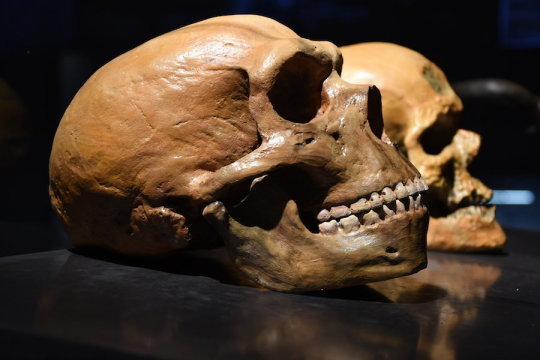
Neanderthal vs human skull/© Bruder/Adobe Stock
From ScienceDaily:
Modern humans share a common ancestor with Neanderthals, the extinct species that were our closest prehistoric relatives. However, the details on when and how they diverged are a matter of intense debate within the anthropological community.
Ancient DNA analyses have generally indicated that both lineages diverged around 300,000 to 500,000 years ago, which has strongly influenced the interpretation of the hominin fossil record.
This divergence time, however, is not compatible with the anatomical and genetic Neanderthal similarities observed in the hominins from Sima de los Huesos. The Sima fossils are considered likely Neanderthal ancestors based on both anatomical features and DNA analysis.
Dr Gomez-Robles said: “Sima de los Huesos hominins are characterised by very small posterior teeth (premolars and molars) that show multiple similarities with classic Neanderthals. It is likely that the small and Neanderthal-looking teeth of these hominins evolved from the larger and more primitive teeth present in the last common ancestor of Neanderthals and modern humans.”
Dental shape has evolved at very similar rates across all hominin species, including those with very expanded and very reduced teeth. This new study examined the time at which Neanderthals and modern humans should have diverged to make the evolutionary rate of the early Neanderthals from Sima de los Huesos similar to those observed in other hominins. Paper. (open access) – Aida Gómez-Robles. Dental evolutionary rates and its implications for the Neanderthal–modern human divergence. Science Advances, 2019; 5 (5): eaaw1268 DOI: 10.1126/sciadv.aaw1268 More.
Well, this paper is likely to add fuel to the “intense debate”:
Although this study presents compelling evidence, experts may disagree. “I just don’t see the argument that dental rates of evolution are absolutely known to the point where we can then say that for certain the Neanderthal-modern human divergence must have been earlier than 800,000 years ago,” says Rick Potts of the Smithsonian Institution to Smithsonian.Chia-Yi Hou, “Neanderthals and Modern Humans Diverged Earlier than Thought: Study” at The Scientist
If Neanderthals “diverged” from “modern humans” 800,000 years ago but many of us have Neanderthal genes (yeah, 23andMe stuff, for sure), what chance is there that much of the contention is based on the fact that we don’t really know enough to be sure of very many things?
What, really, do claims about speciation contribute?
See also: Researchers: Sediba is not a human ancestor after all. Back to Lucy, but… The anthropologist is right, the fossil record IS full of surprises. But the news that Lucy is only “the best candidate” is worth some reflection. It sounds like we have little to go on and Lucy is at best plausible.
and
A physicist looks at biology’s problem of “speciation” in humans
Follow UD News at Twitter!
Copyright © 2019 Uncommon Descent . This Feed is for personal non-commercial use only. If you are not reading this material in your news aggregator, the site you are looking at is guilty of copyright infringement UNLESS EXPLICIT PERMISSION OTHERWISE HAS BEEN GIVEN. Please contact legal@uncommondescent.com so we can take legal action immediately.
Plugin by Taragana
Amber—a moment in time 100 mya
 Amber, showing most large inclusions/NIGPAS
Amber, showing most large inclusions/NIGPASLife forms trapped in amber—hardened resin from conifers—can show remarkable examples of stasis: No real change from one ten-million-year span to the next one. Sometimes a number of different types of life forms get trapped:
The ammonite, a kind of sea animal, was trapped in 99-million-year-old amber from northern Myanmar. The amber is 33 mm long, 9.5 mm wide, 29 mm high and weighs 6.08 g. Besides the ammonite, the amber also encases a diverse assemblage of organisms that today live on land or in the sea, including at least 40 individual animals.
Of the terrestrial fauna found in the amber, mites are the most abundant. Also present are spiders, millipedes, cockroaches, beetles, flies and wasps, most of which would have lived on the forest floor.
Of the marine fauna, in addition to the ammonite itself, sea snails and sea slaters are present. The slaters are like those living on the seashore today. “Coastal organisms trapped in 99-million-year-old amber” at Chinese Academy of Sciences Headquarters
Researchers were at first puzzled by the presence of marine as well as terrestrial animals. It seems that trees growing near a seashore provided the resin that formed the amber.
Note that “The slaters are like those living on the seashore today.” In a world that—we are told—features unceasing change, we find so many examples of stasis, no change. For example, Millipedes Found In 100 Mya Amber Comprise 13 Of 16 Known Groups and Spider in amber is 49 million-year-old member of living genus
See also: Beetle trapped in amber 99 mya offers window into prehistoric ecology So, in another instance of “earlier than thought,” pollination seems to have preceded flowering plants.
Stasis: Dinosaur-era baby snake looks just like modern ones
“Live action” captured in a spider’s web from 100 million years ago
How did 20-30 myo salamander in amber get IN there?
and
Stasis: Life goes on but evolution does not happen
Sea slater:
Follow UD News at Twitter!
Copyright © 2019 Uncommon Descent . This Feed is for personal non-commercial use only. If you are not reading this material in your news aggregator, the site you are looking at is guilty of copyright infringement UNLESS EXPLICIT PERMISSION OTHERWISE HAS BEEN GIVEN. Please contact legal@uncommondescent.com so we can take legal action immediately.
Plugin by Taragana
May 15, 2019
Historian: Evolution means that human equality is a myth
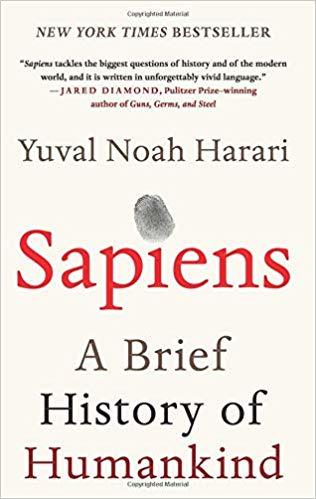
Now that issues around status in society are increasingly contentious, it’s interesting that the “evolutionary” view is flatly against equality, according to historian Yuval Noah Harari, author of Sapiens: A Brief History of Humankind. A friend writes to say, “one helpful thing about Sapiens is that Harari is honest about the implications of a Darwinian viewpoint—he admits that it removes an objective basis for human equality, human value, and human rights (pp. 109-110)”:
Yet the idea that all humans are equal is also a myth. In what sense do all humans equal one another? Is there any objective reality, outside the human imagination, in which we are truly equal? Are all humans equal to one another biologically? Let us try to translate the most famous line of the American Declaration oflndependence into biological terms:
We hold these truths to be self-evident, that all men are created equal, that they are endowed by their Creator with certain unalienable rights, that among these are life, liberty, and the pursuit of happiness.
According to the science of biology, people were not ‘created’. They have evolved. And they certainly did not evolve to be ‘equal’. The idea of equality is inextricably intertwined with the idea of creation. The Americans got the idea of equality from Christianity, which argues that every person has a divinely created soul, and that all souls are equal before God. However, if we do not believe in the Christian myths about God, creation and souls, what does it mean that all people are ‘equal’? Evolution is based on difference, not on equality. Every person carries a somewhat different genetic code, and is exposed from birth to different environmental influences. This leads to the development of different qualities that carry with them different chances of survival. ‘Created equal’ should therefore be translated into ‘evolved differently’.
…
So here is that line from the American Declaration of Independence translated into biological terms:
We hold these truths to be self-evident, that all men evolved differently, that they are born with certain mutable characteristics, and that among these are life and the pursuit of pleasure.
Advocates of equality and human rights may be outraged by this line of reasoning. Their response is likely to be, ‘We know that people are not equal biologically! But if we believe that we are all equal in essence, it will enable us to create a stable and prosperous society.’ I have no argument with that. This is exactly what I mean by ‘imagined order’. We believe in a particular order not because it is objectively true, but because believing in it enables us to cooperate effectively and forge a better society. Imagined orders are not evil conspiracies or useless mirages. Rather, they are the only way large numbers of humans can cooperate effectively. Bear in mind, though, that Hammurabi might have defended his principle of hierarchy using the same logic: ‘I know that superiors, commoners and slaves are not inherently different kinds of people. But if we believe that they are, it will enable us to create a stable and prosperous society.’
It seems our friend wrote to Evolution News and Science Today as well.
As Nancy Pearcey asks in her book Love Thy Body, “As the implications of evolutionary materialism filter down through the public mind, the rights enjoyed in free societies will be demoted to the status of “myth.” And then who will defend those rights?”
The “evolutionary” view (Darwinism, in fact) is often portrayed as a sort of liberation but people may be rather surprised to discover exactly what that liberation is.
Note: Michael Egnor has addressed some of Harare’s assertions in Is Free Will a Dangerous Myth and AI IsIndeed a Threat to Democracy (But not in quite the way historian Yuval Noah Harari thinks)
See also: Ernst Haeckel studied sponges to demonstrate “a universe devoid of supernatural beings or purpose” Just to set the record straight, embryologist Ernst Haeckel (1834–1919) had, according to learned expert, a “philosophy of sponges.” And the title above captures part of it.
Follow UD News at Twitter!
Copyright © 2019 Uncommon Descent . This Feed is for personal non-commercial use only. If you are not reading this material in your news aggregator, the site you are looking at is guilty of copyright infringement UNLESS EXPLICIT PERMISSION OTHERWISE HAS BEEN GIVEN. Please contact legal@uncommondescent.com so we can take legal action immediately.
Plugin by Taragana
Ernst Haeckel studied sponges to demonstrate “a universe devoid of supernatural beings or purpose”
 stovepipe sponge/Nhobgood (CC BY-SA 3.0)
stovepipe sponge/Nhobgood (CC BY-SA 3.0)Just to set the record straight, embryologist Ernst Haeckel (1834–1919) had, according to learned expert, a “philosophy of sponges.” And the title above captures part of it. Read on.
Recently, we called attention to a current defense of Haeckel’sfake-up embryo drawings. Apparently, anything that encourages people to believe Darwinism is good, whether it is true or false. (Well, now we know.)
Meanwhile, a reader writes to say that the same edition of Theory of Biosciences (which commemorates Ernst Haeckel), features an open-access item on Haeckel’s philosophy of sponges, which might be the most interesting of the lot.
Abstract: Nearly 150 years ago, Ernst Haeckel published a three volume monograph on the calcareous sponges. These volumes contained the results of his extensive investigation of the anatomy, reproduction, and development of these marine invertebrate organisms. This paper discusses how Haeckel’s contribution to spongiology was so distinct from that of earlier writers on the natural history of sponges, by focusing on his “philosophy of sponges.” This included “an analytic” proof of Darwin’s theory of descent, an argument for the monophyletic origin of the Metazoa from an ancient sponge-like embryo (the “gastraea theory”), and proof of the philosophy of monism that humans are no different than lowly sponges in their perfectly natural and material origins according to the laws of ontogeny in a universe devoid of supernatural beings or purpose. Haeckel was a philosopher using the methods of natural science. He was also a gifted artist—as his illustrations attest—and like most artists he disliked criticism of his creations, including his theoretical work. His observations and speculations regarding sponges (and certainly his more philosophical conclusions drawn therefrom) were and continue to be criticized, but as a review of the current literature shows, Haeckel’s imprint on sponge biology is still very evident. Andrew S. Reynolds, “Ernst Haeckel and the philosophy of sponges” at Theory in Biosciences, , May 2019, Volume 138, Issue 1, pp 133–146
In other words, Haeckel was using the study of sponges to promote metaphysical naturalism (nature is all there is), often called “materialism,” but that—of course—is not supposed to skew his view the way some other philosophy would.
He thought that sponges were the common ancestors of all animals, a view widely held today, though some opt for comb jellies. But even a supporter admits that his main motivations were philosophical and—with respect to his considerable “imprint on sponge biology”— it may not be clear where the philosophy ends and the science begins with this story of life 750 million years ago.
We probably haven’t heard the last from the Comb Jellies’ PR team, however. See the vid below.
See also: Astonishing duplicity continues around Haeckel’s embryos So stuff that isn’t true provides an “excellent foundation” and “compelling proof of the theory of common descent?”
Follow UD News at Twitter!
Copyright © 2019 Uncommon Descent . This Feed is for personal non-commercial use only. If you are not reading this material in your news aggregator, the site you are looking at is guilty of copyright infringement UNLESS EXPLICIT PERMISSION OTHERWISE HAS BEEN GIVEN. Please contact legal@uncommondescent.com so we can take legal action immediately.
Plugin by Taragana
Michael J. Behe's Blog
- Michael J. Behe's profile
- 219 followers



